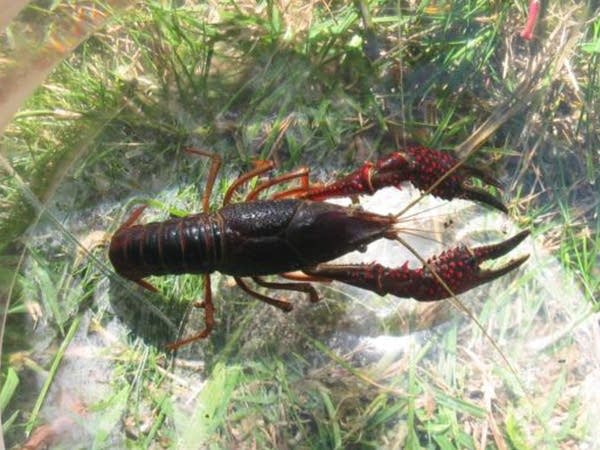How did he get here? Meet Minnesota's newest invasive pest

The red swamp crayfish is more at home in Louisiana than northwest Minnesota. But state conservation officials say the invasive species has been discovered in a Clay County lake and might not be leaving anytime soon.
Two of the creatures were found in Tilde Lake, northeast of Moorhead, Minn., the Minnesota Department of Natural Resources said Thursday. The agency suggested the creatures could be castoffs from a classroom aquarium or a crawfish boil.
"Many aquarium animals and plants are invasive species that can cause serious harm if released into the wild," Heidi Wolf, DNR invasive species unit supervisor, said in a statement.
A permit is required to import crayfish and most any aquatic animals for any purpose. "Without a permit it is illegal to import or possess red swamp crayfish in Minnesota, Wolf added.
Create a More Connected Minnesota
MPR News is your trusted resource for the news you need. With your support, MPR News brings accessible, courageous journalism and authentic conversation to everyone - free of paywalls and barriers. Your gift makes a difference.
Adult red swamp crayfish run from 2 to 5 inches in length and their red coloring has led some sellers to advertise them as freshwater "lobster" for aquariums, according to an analysis of research by the U.S. Geological Survey. It's popular as bait among largemouth bass anglers; flushing them down the toilet is likely an ineffective way to kill them, the agency's research noted.
The creatures have been found in southeastern Wisconsin and in the Missouri River on the Nebraska-South Dakota border.
The DNR said the red swamp crayfish compete with native species for habitat and eat tadpoles, snails and other small aquatic animals, and "their burrowing habits make them extremely difficult to remove and cause damage to levees, dams and water control structures," the DNR said, adding that the most humane way to dispose of the creatures is to "put them in a plastic bag in the freezer for a day, then put the bag into the trash."
Wolf urged teachers to check with the DNR about potentially invasive species before bringing aquatic animals into the classroom.